Invented by Frank Jones, James Benson Bacque, Robert Hilkes, Mehdi Arezoomand Ersdhadi, Mark Harris, Jon Pawson, eSight Corp
Large exit pupil wearable near-to-eye vision systems refer to devices that provide a high-quality, immersive visual experience by projecting images directly onto the user’s eyes. These systems typically consist of a display unit, optics, and a freeform eyepiece. The freeform eyepiece plays a crucial role in optimizing the visual performance of the system, ensuring a wide field of view, high resolution, and minimal distortion.
One of the key advantages of these systems is their ability to create a large exit pupil, which refers to the size of the virtual image that can be seen by the user. A larger exit pupil allows for greater freedom of movement and a more comfortable viewing experience, as the user does not need to align their eyes precisely with the optics. This is particularly important in applications such as virtual reality, where users may engage in dynamic movements and need to maintain a clear view of the virtual environment.
The use of freeform eyepieces further enhances the visual quality of these systems. Traditional eyepieces are typically designed with spherical or aspherical surfaces, which can introduce aberrations and distortions. Freeform eyepieces, on the other hand, are designed with complex, non-symmetric surfaces that can correct for these aberrations, resulting in improved image quality and reduced eye strain.
The market for large exit pupil wearable near-to-eye vision systems exploiting freeform eyepieces is driven by several factors. Firstly, the increasing demand for immersive entertainment experiences, such as virtual reality gaming and 3D movies, is fueling the adoption of these systems. Consumers are seeking more realistic and engaging ways to interact with digital content, and large exit pupil wearable near-to-eye vision systems offer a compelling solution.
Additionally, industries such as healthcare and defense are also driving the market growth. In healthcare, these systems are being used for surgical training, medical simulations, and telemedicine applications. They enable medical professionals to visualize complex anatomical structures in a more intuitive and immersive manner, improving training outcomes and patient care. In the defense sector, these systems are utilized for training simulations, situational awareness, and remote operations, enhancing the effectiveness and safety of military personnel.
The market is witnessing a surge in innovation and competition, with numerous companies developing and commercializing large exit pupil wearable near-to-eye vision systems. Established players like Oculus, HTC, and Microsoft are continuously improving their virtual reality headsets, incorporating freeform eyepieces to enhance the visual experience. At the same time, startups and research institutions are pushing the boundaries of this technology, exploring new applications and developing novel solutions.
In conclusion, the market for large exit pupil wearable near-to-eye vision systems exploiting freeform eyepieces is experiencing significant growth, driven by the increasing demand for immersive entertainment, healthcare applications, and defense uses. These systems offer a high-quality, immersive visual experience, enabling users to interact with digital content in a more realistic and engaging manner. As technology continues to advance, we can expect further innovations and applications in this exciting field.
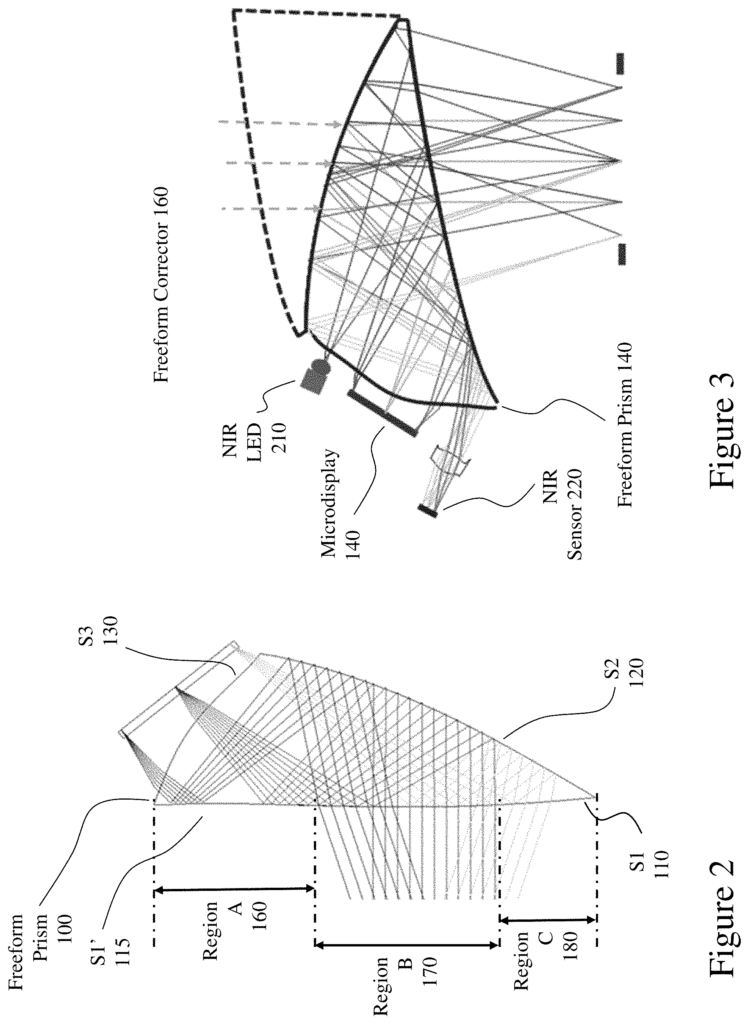
The eSight Corp invention works as follows
The invention addresses these issues and provides a high performance optical system through the design of the optical eyepiece to overcome these limitations within a bioptic configuration with laterally disposed displays. The embodiments of the invention overcome these limitations by providing a high-performance optical system using the design of an optical eyepiece.
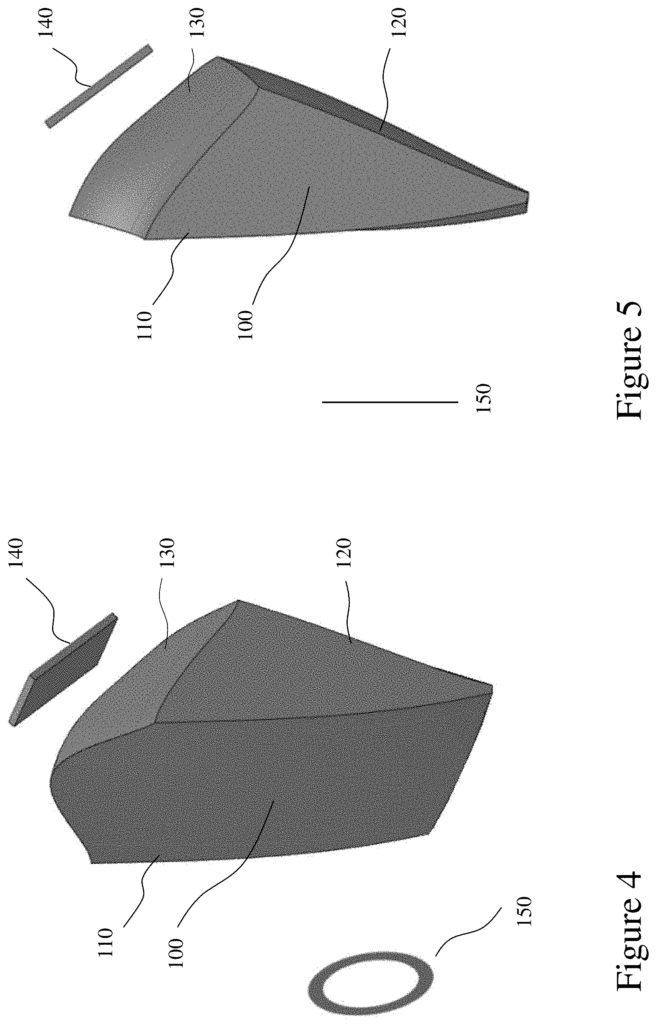
Background for Large exit pupil wearable near-to-eye vision systems exploiting freeform eyepieces
Wearable near-to eye (NR2I), vision systems, or NR2I Displays are a type of wearable device which creates an image in front of a user’s field-of-vision from an electronic display. The display can be transparent so that the user can simultaneously view both the external world as well as the projected electronic screen or opaque, where the user may view either the electronic display directly or the projected electronic screen depending on the application. A transparent display, for example, can overlay graphics and information on top of the real world. An opaque display, on the other hand, can create an immersive theatre-like experience. Further, NR2I displays can provide information in the entire visual field of view or alternatively within a part of the field of vision of the user.
For users exploiting NR2I displays for augmented reality and/or correction of low vision, then the user is typically, either going to wear the NR2I displays for specific tasks, for specific visual environments, etc. and hence there is an issue of repeatedly attaching and removing the NR2I display or they are going to be wearing the NR2I display for extended periods of time, potentially all their time awake. Accordingly, the majority of applications irrespective of whether they are for short-term, long-term, low vision, augmented reality, etc. yield a conflicting tradeoff between user comfort, ease of attachment, minimizing intrusiveness and aesthetics which must be concurrently balanced with and are often in conflict with providing an optical vision system within the NR2I display that provides the user with a wide field of view and high image resolution whilst also offering a large exit pupil for eye placement with sufficient eye clearance. Accordingly, it would be beneficial to provide NR2I systems that address these issues and provide a high performance optical system within an advance in the field of head-mounted displays and NR2I systems to provide an eyepiece design which overcomes these limitations.
The following description of embodiments of this invention, together with the accompanying figures, will reveal other aspects and features to those skilled in the art.
The following description of embodiments of this invention, together with the accompanying figures, will reveal other aspects and features to those skilled in the art.
The present invention aims to overcome limitations in the prior art relating wearable NR2I systems, more specifically to provide wearable NR2I systems with a wide field of vision, high resolution image, large pupil for placement of the eye, enough eye clearance, and an elegant ergonomic design.
The assembly holds the microdisplay in place relative to the first surface of the prism lens. It is also positioned near the temple of the user closest to the eye of the user viewing the projected light.
The invention provides a near-to-eye display system that includes a second assembly. This second assembly comprises a free-form lens, a microdisplay, and a projector for displaying image-light on a predetermined area of a first face of said free-form lens. Image-light is reflected twice within the free-form lens before leaving the lens to be viewed by the other eye of the user.
The assembly holds the microdisplay in place relative to the first surface of a free-form lens, and proximate to the temple of the users nearest to the eye of the user viewing the projected light.
The invention provides a “near-to-eye” display system that includes a microdisplay and a free-form lens. This assembly projects image-light on a first-surface of said prism, which then performs a reflection of light from a third-surface of said prism, and a reflection of light from this third-surface towards a predetermined area of the second-surface, whereupon light exits from the prism towards the eye of the user through the predetermined portion.
The following description of embodiments of this invention, together with the accompanying figures, will reveal other aspects and features to those skilled in the art.
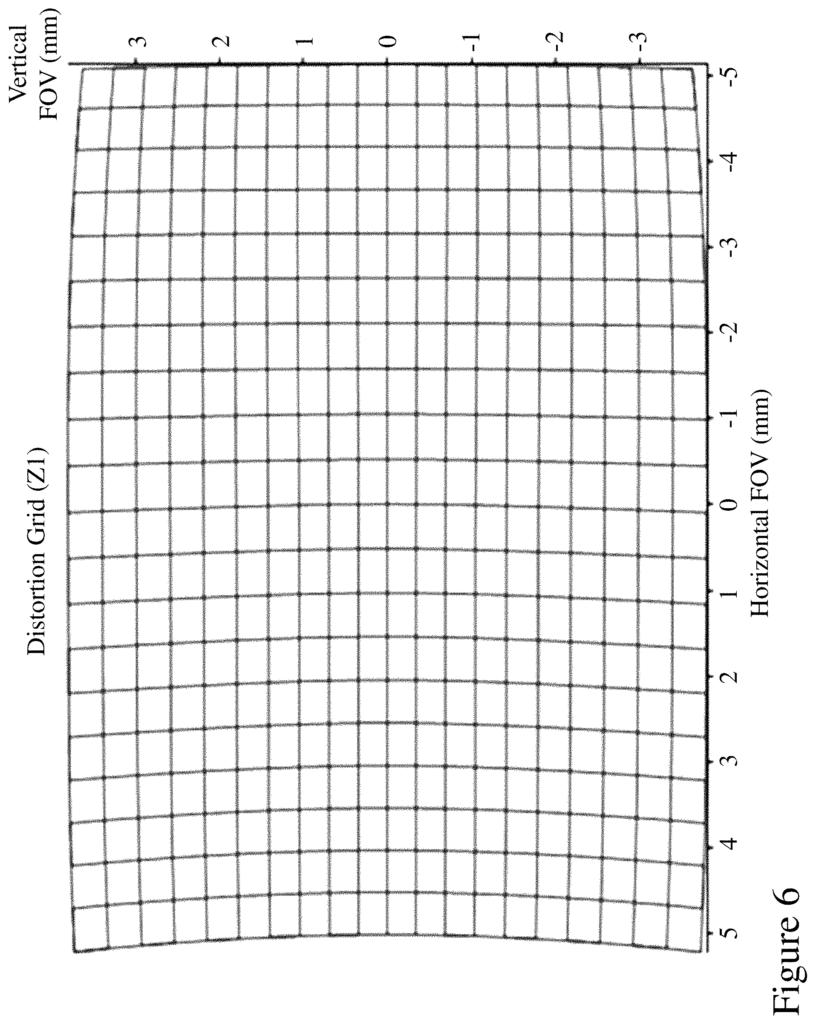
The present invention is directed towards wearable NR2I systems, more specifically to provide wearable NR2I systems with wide fields of view, high resolution images, large exit pupils for eye placement and sufficient eye clearance.
The following description is intended only to provide representative embodiments and not to limit the scope of application or configuration. The description of embodiments will instead provide those in the know with an enabling description to implement an embodiment or embodiments. The function and arrangement can be changed without departing the spirit and scope of the claims. An embodiment is not the only implementation, but rather an example of how the inventions are implemented. The different appearances of “one embodiment” ?an embodiment? “An embodiment” or “some embodiments” All of them do not have to refer to the exact same embodiment. The invention can be described with respect to a single embodiment. However, it is possible for the features to be used separately or in any combination. The invention is described in this document in terms of different embodiments to make it clearer. However, the invention can be implemented as a single embodiment, or in any combination of embodiments.
Reference to a particular embodiment, an embodiment, or a few embodiments” “Or ‘other embodiments’? This means that the feature, structure or characteristic described with respect to the embodiments are included in at least some embodiments of the inventions. The terminology and phraseology used herein are not intended to be restrictive but only descriptive. When the claims or specifications refer to “a” or “an? It is to be understood that when the claims or specification refer to?a? This does not mean that there is only one element. When the specification says that a component characteristic, feature, or structure?may? It is to be understood that where the specification states that a component feature, structure, or characteristic?may?,?might? “Even if a component, feature or characteristic?could?
Referring to terms like ‘left?, “right?, “top?, “bottom?, and ‘front? “Terms such as?left?,?right?,?top?,?bottom? and ‘front? The terms?forward’ and?back’ are used to indicate the direction of a particular feature, structure or element in the figures that depict embodiments of an invention. This directional terminology is not intended to have a specific meaning in relation to actual device use, as the device may be used by users at different angles. Referring to the terms “including”, “comprising”, or “consisting” is not permitted. The terms?including?, ‘comprising?, ‘consisting of’, and their grammatical variations do not exclude the addition of a component, feature, step, integer or group thereof, and the terms should not be interpreted as specifying components features steps integers. The phrase “consisting essentially” and its grammatical variations, as used herein, are not to be construed in a way that excludes additional components, steps or features or integers. Instead, they should be understood to mean that additional features, integers and steps or components do not alter the fundamental and novel characteristics. If the specification or claim refers to “an additional” If the specification or claims refer to?an additional element?, this does not mean that there can only be one.
A head mounted NR2I Display” The term (NR2I), as used in this document and throughout the disclosure, refers to an wearable device which incorporates an imaging device working with a processor so that a portion of an image can be displayed to the user via the image display device (NR2I). Image presentation devices are typically LCD displays, LED displays, or OLED displays, although any display device that can be mounted and supported in a NR2I could be considered. As mentioned above, a NR2I can be configured to be immersive where the user is able to view the display without any external direct visual view or non-immersive where the user is able view the display directly from the outside. NR2I configurations and the associated NR2I displays may include immersive viewing with direct viewer view of NR2I, immersive viewing with indirect viewer view of NR2I through an intermediary optical assembly, non immersive viewing with direct viewer of NR2I which is substantially translucent, immersive viewing with indirect viewer of NR2I through an intermediary optical assembly. Optical subassemblies can be used to allow indirect viewing of the NR2I Display. The NR2I may be placed above or below the eyeline of the viewer. “Non-immersive configurations can use a nontransparent display, optical assembly or display that presents a smaller view field than the viewer’s field of vision or is in their peripheral vision so it doesn’t overlay their central field of sight.
A NR2I can be monocular or bi-cular. A NR2I can be fixed. When worn, it has a fixed position relative to the head of the user. When worn, the NR2I can be adjusted to two (2), three(3), or even more positions relative to the head. It may also be continuously or pseudocontinuously variable. NR2I can pivot between different positions based on the user’s position. It may also be manually moved. The NR2I may be mounted on a frame that is worn by the user and supports the NR2I. The frame can also include lenses, prescription lenses or filters, polarizing or photochromic or electrochromic elements. The NR2I may be attached permanently to the frame, or removable. The NR2I may also include other elements, such as electronic components, cameras, optical emitters, wired or wireless interfaces and batteries.
A NR2I Display may present to the user an image that may have been acquired by a camera which is also part of the NR2I, or a separate camera attached to the user. For example, a remote-attached camera. The image(s)/video content can also be acquired by a portable device, fixed device, cable set-top-box, satellite set top-box, or other video sources. The image displayed to the user can be directly acquired or processed to fit the display. Image processing can align elements in the field of view, such as a schematic overlay aligned with a circuit that the user is working on. In other embodiments, the image can be processed in order to enhance the visual perception by the user.
An NR2I Display may include a Microprocessor and any other electronics associated with it, including but not limited, memory, user interface device, gaze-tracking, inertial sensor, context determination and graphics processor. These may be integrated with the NR2I or form part an overall assembly together with the NR2I. They may also form part the PED or may be wirelessly connected with the NR2I. NR2I displays can be wirelessly connected to the PED of the user, while in another embodiment, the NR2I is self-contained.
A ‘freeform optical component? As used in this document and throughout the disclosure, “a?freeform optical element? “which exploits one or multiple freeform optical surfaces.
A freeform optical surface” As used in this document and throughout the disclosure, “a freeform optical surface” refers to an optical surfaces that are by design non-rotationally-symmetric and/or have non-symmetrical features. These surfaces use a third independent, or C-axis in traditional diamond-turning terminology, to create optical surfaces that are non-symmetric by design. These freeform optical surfaces can be based on the Zernike surface or derivatives such as multi-centric radial base function (RBF), Q-polynomial, and non-uniform ration B-splines. Multicentric RBF surfaces can be added to optical surfaces that vary in shape, such as from a basic spherical or Zernike surface.
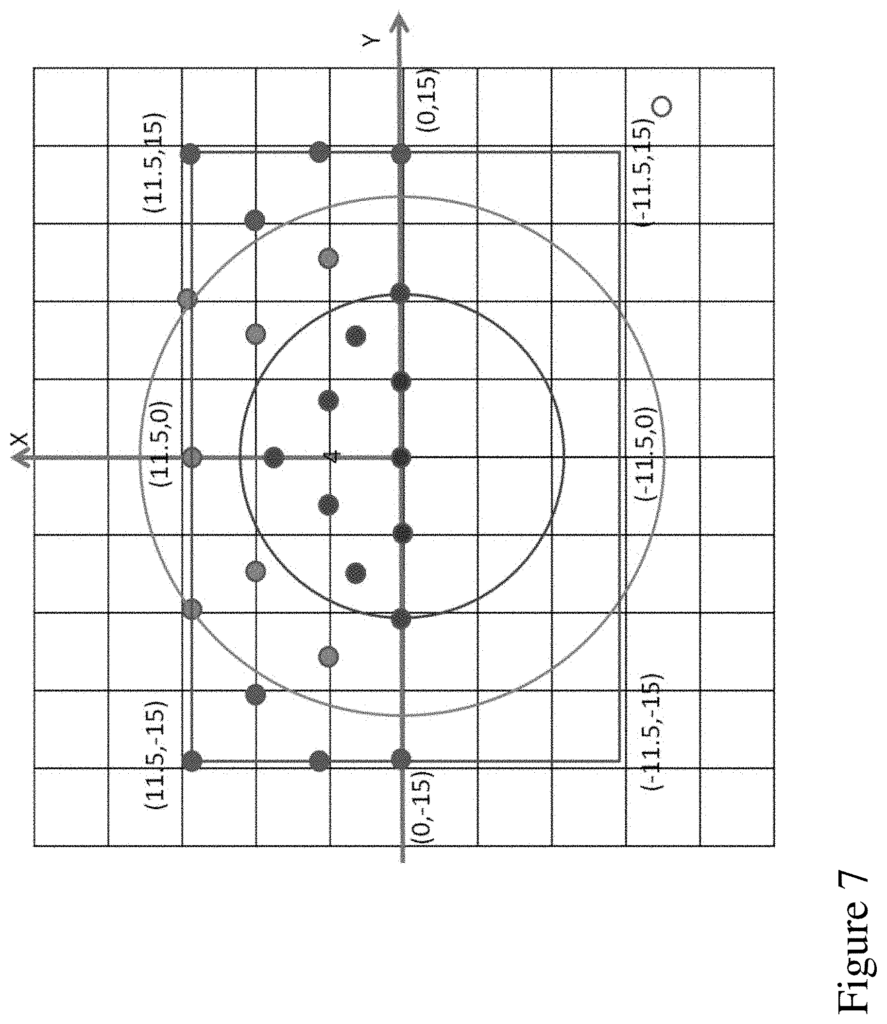
Click here to view the patent on Google Patents.
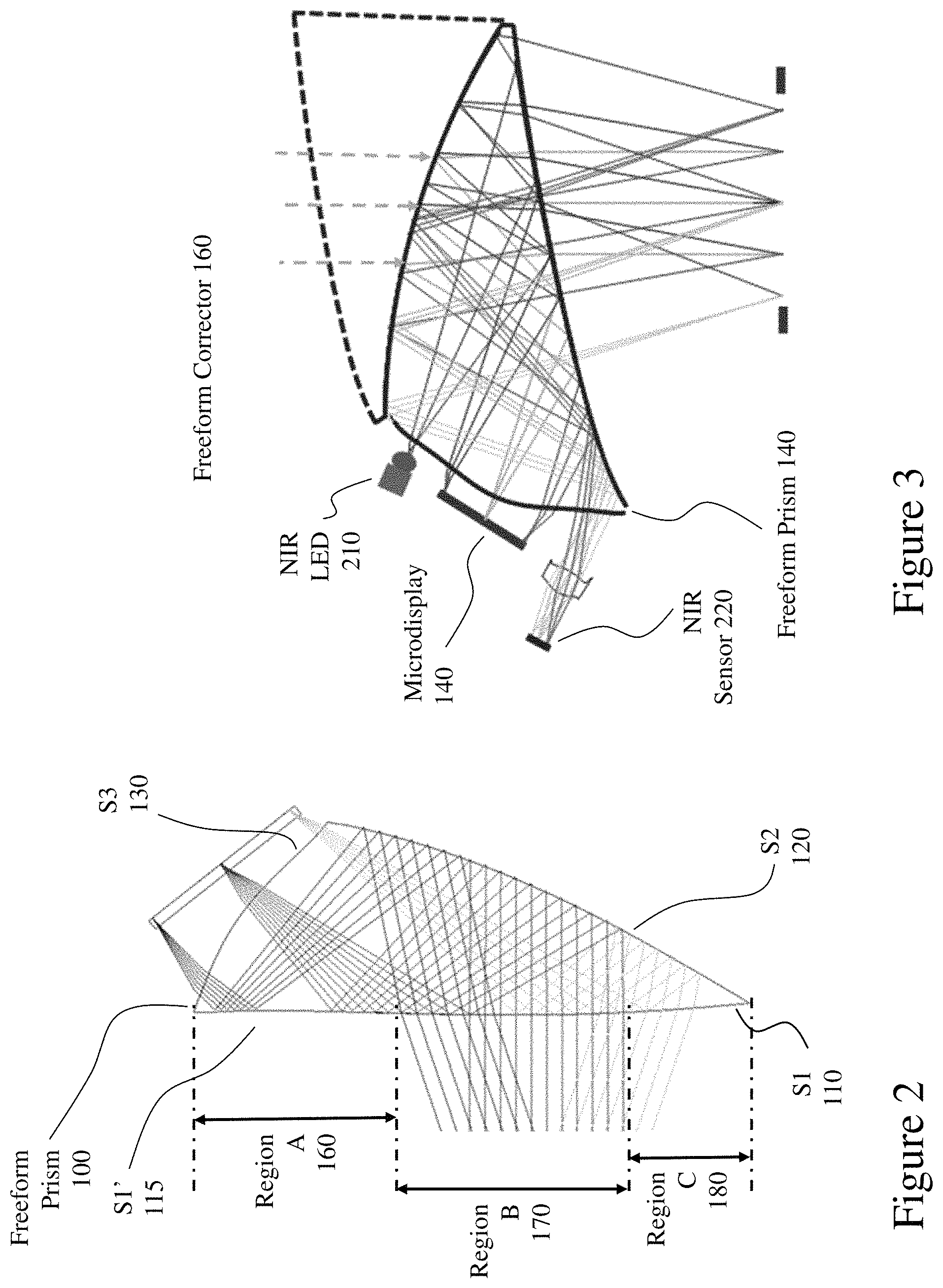
Leave a Reply